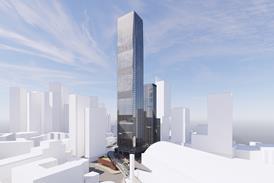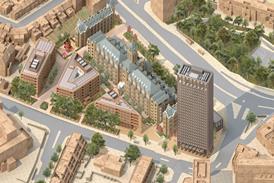- Home
 Grenfell refurbishment companies sued for more than £360m by council
Grenfell refurbishment companies sued for more than £360m by council Investors likely to be spooked by Trump tariffs in short term, London cost consultant Exigere warns
Investors likely to be spooked by Trump tariffs in short term, London cost consultant Exigere warns Manchester approves four towers including UK’s tallest outside London
Manchester approves four towers including UK’s tallest outside London Niall McLaughlin’s student resi scheme latest to be called in by London mayor
Niall McLaughlin’s student resi scheme latest to be called in by London mayor
- Intelligence for Architects
- Subscribe
- Jobs
- Events

2025 events calendar Explore now 
Keep up to date
Find out more
- Programmes
- CPD
- More from navigation items
Learning from lockdown: Don’t blame density for problems caused by poverty

Healthy housing should not be the privilege of the wealthy. Earle Arney prescribes ’extreme measures for extreme circumstances’
As shapers of cities, the pandemic has shown us we must radically improve how design impacts on the poor and vulnerable. However, we must also guard against Dickensian reactions to density, which has been long blamed as a major cause of urban society’s ills. What can we learn from covid-19 and how do we separate fact from fiction in the centuries-old debate between density and its impact on urban populations?
Early last century modernism adopted a clear social purpose to fix the problems of urban pollution and overcrowding. Le Corbusier proposed “building up” with towers surrounded by green space. Even earlier, Ebenezer Howard’s Garden City Movement was a reaction against Victorian cities, advocating “building out” and harnessing the bucolic beauty and sanctuary of the suburbs.
Today, the fear of proximity and concerns over urban health could easily continue the same circular narrative that density is inherently bad. It may also rekindle the idea of anti-urban utopias and the rebirth of urban sprawl.
…
This is premium content.
Only logged in subscribers have access to it.
Login or SUBSCRIBE to view this story

Existing subscriber? LOGIN
A subscription to Building Design will provide:
- Unlimited architecture news from around the UK
- Reviews of the latest buildings from all corners of the world
- Full access to all our online archives
- PLUS you will receive a digital copy of WA100 worth over £45.
Subscribe now for unlimited access.
Alternatively REGISTER for free access on selected stories and sign up for email alerts


